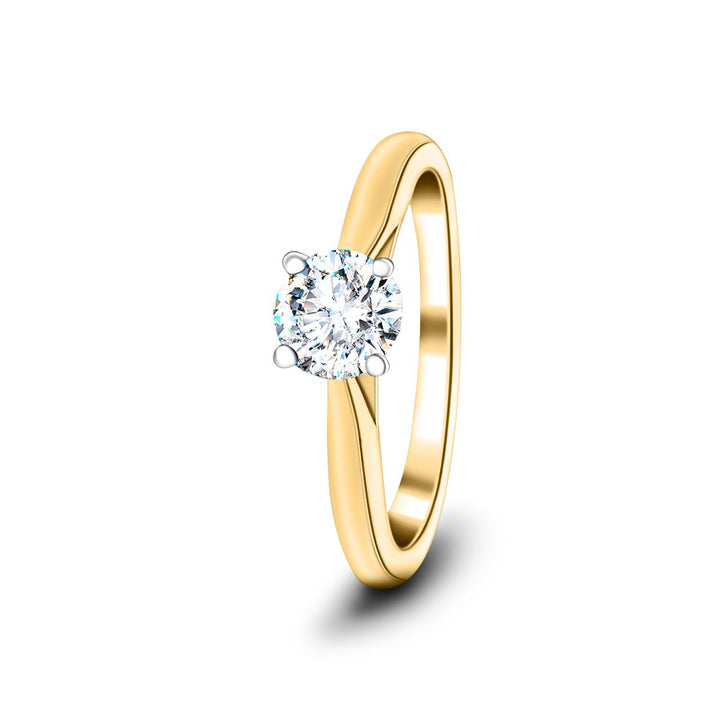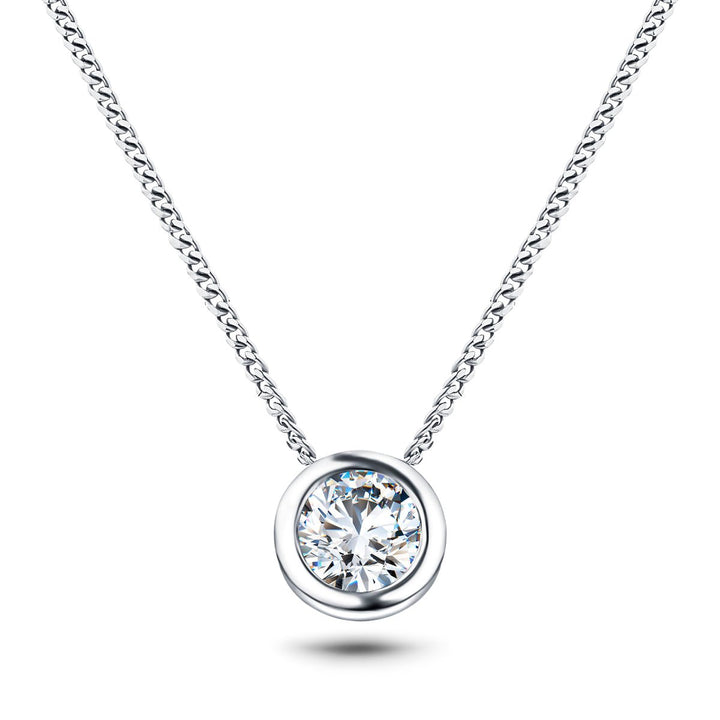In the glittering world of gemstones, synthetic diamonds are a technological marvel, reshaping perceptions of luxury, ethics, and value. This in-depth guide to synthetic diamonds offers an expansive look into everything you need to know about synthetic diamonds. Ideal for enthusiasts and industry professionals alike, this article will navigate you through the fascinating nuances of these lab-created wonders, highlighting their ethical implications, economic benefits, and much more.
The Ethical Revolution of Synthetic Diamonds
1.1. The Dark History of Natural Diamonds
Natural diamonds have a long history of being associated with controversy and ethical dilemmas. Throughout the years, they have been linked to various issues that have caused harm to both people and the environment. One of the most notorious problems associated with natural diamonds is their connection to conflict and war. In many regions of the world, diamonds have been used to fund armed conflicts and fuel violence. This has led to the term "blood diamonds" or "conflict diamonds" being coined to describe diamonds that have been mined and sold to finance armed conflicts.
Additionally, the mining of natural diamonds has been associated with inhumane labour practices. Many diamond mines, particularly in developing countries, have been criticized for their exploitation of workers, including child labour, unsafe working conditions, and low wages. This has raised significant ethical concerns in the jewellery industry.
Overall, the dark history of natural diamonds highlights the need for an ethical alternative that can address these issues and provide consumers with a clear conscience.
1.2. Synthetic Diamonds: A Solution to Ethical Dilemmas
Synthetic diamonds offer a solution to the ethical dilemmas associated with natural diamonds. These diamonds are created in a laboratory setting, using advanced technology to replicate the natural diamond formation process. As a result, they possess the same physical and chemical properties as natural diamonds.
One of the key ethical advantages of synthetic diamonds is the reduction of environmental degradation. Traditional diamond mining requires extensive excavation of land, which can lead to deforestation, habitat destruction, and soil erosion. In contrast, the production of synthetic diamonds has a significantly smaller environmental footprint, as it does not involve the same level of land disturbance.
Furthermore, synthetic diamonds eliminate the issue of conflict diamonds. Since they are created in a controlled environment, there is no possibility of them being associated with armed conflicts or human rights abuses. This provides consumers with the assurance that their diamonds are ethically sourced and free from any negative social impact. In conclusion, synthetic diamonds offer an ethical revolution in the diamond industry.
By addressing the dark history of natural diamonds and providing an alternative that sidesteps the ethical pitfalls, synthetic diamonds allow consumers to enjoy the beauty and prestige of diamonds without compromising their values.
The Economic Benefits of Synthetic Diamonds
2.1. Cost-Effectiveness of Lab-Grown Diamonds
Synthetic diamonds have gained significant popularity in recent years due to their cost-effectiveness. In this section, we will analyse the pricing differences between synthetic and natural diamonds, highlighting how lab-grown diamonds are making luxury more accessible.
Synthetic diamonds are created in a laboratory setting through a process that replicates the natural formation of diamonds under high pressure and temperature conditions. This method allows for the production of diamonds with similar chemical and physical properties to natural diamonds. One of the key advantages of synthetic diamonds is their lower cost compared to natural diamonds.
The production process for lab-grown diamonds is more controlled and efficient, resulting in reduced production costs. As a result, synthetic diamonds are typically priced at a fraction of the cost of their natural counterparts. The cost-effectiveness of lab-grown diamonds has made luxury more accessible to a wider consumer base.
Previously, natural diamonds were considered a luxury item that only a few could afford. However, with the availability of synthetic diamonds at lower price points, more individuals can now enjoy the beauty and elegance of diamond jewellery.
2.2. The Market Response to Affordable Luxury
The affordability of synthetic diamonds has had a significant impact on the global diamond market. In this section, we will examine how the market has responded to this shift towards affordable luxury. Industry experts and market analysis have observed a growing demand for synthetic diamonds, driven by their lower price point.
Consumers are increasingly seeking alternatives to natural diamonds that offer similar quality and beauty at a more affordable price. This changing consumer demand has prompted major players in the diamond industry to embrace synthetic diamonds. Established jewelry brands and retailers have started offering lab-grown diamonds alongside their natural diamond collections.
This diversification allows them to cater to a broader customer base and capture the growing market for affordable luxury. The market response to synthetic diamonds has also been observed in the rise of dedicated lab-grown diamond brands. These brands solely focus on producing and marketing synthetic diamonds, positioning themselves as a more affordable and sustainable alternative to natural diamonds.
Overall, the affordability of synthetic diamonds has reshaped the global diamond market. Consumers now have more options when it comes to purchasing diamond jewellery, and the increased availability of lab-grown diamonds has made luxury more accessible to a wider audience. This trend is expected to continue as more consumers recognize the value and benefits of synthetic diamonds.
£910.00
Embrace the warmth of love with the Ella Lab Diamond Solitaire Engagement Ring, crafted in the UK with the finest materials. This ring features a stunning 1.00-carat G/VS-graded lab-grown diamond set in 18k yellow gold, creating a striking contrast that… read moreElla Lab Diamond Solitaire Engagement Ring 1.00ct G/VS 18k Yellow Gold

£1,736.00
The Science Behind Synthetic Diamonds
3.1 The Technical Process of Creating Synthetic Diamonds
Seeding Stage The first step in creating synthetic diamonds is the seeding stage. This involves placing a small diamond seed, typically made from natural diamond, in a high-pressure, high-temperature (HPHT) environment. The seed acts as a starting point for the growth of the synthetic diamond.
High-Pressure, High-Temperature (HPHT) Treatment Once the seed is in place, it is subjected to extreme conditions of high pressure and high temperature. This simulates the natural conditions under which diamonds are formed deep within the Earth's mantle. The HPHT treatment allows carbon atoms to bond together and form the crystal lattice structure of a diamond.
Carbon Source To facilitate the growth of the synthetic diamond, a carbon source is required. This can be in the form of a carbon-rich gas, such as methane or a hydrocarbon, which is introduced into the HPHT chamber. The carbon atoms from the gas source attach themselves to the diamond seed and contribute to the growth of the synthetic diamond.
Growth Stage During the growth stage, the HPHT chamber is carefully controlled to maintain the optimal conditions of pressure and temperature. This allows the diamond to grow layer by layer, gradually increasing in size. The process can take anywhere from a few days to several weeks, depending on the desired size of the synthetic diamond.
Cooling and Removal Once the desired size is achieved, the HPHT chamber is gradually cooled down. This allows the synthetic diamond to solidify and stabilize. After cooling, the synthetic diamond is carefully removed from the chamber and undergoes further processing to enhance its appearance.
3.2 Quality and Characteristics of Lab-Created Diamonds Quality
Lab-created diamonds undergo rigorous testing to ensure their quality. They are graded using the same standards as natural diamonds, considering factors such as colour, clarity, cut, and carat weight. Independent gemological institutes, such as the Gemological Institute of America (GIA), provide certifications for lab-created diamonds, attesting to their high quality.
Hardness One of the defining characteristics of diamonds is their hardness. Lab-created diamonds have the same hardness as natural diamonds, as both are composed of carbon atoms arranged in a crystal lattice structure. This hardness makes lab-created diamonds suitable for a wide range of applications, including jewellery and industrial uses.
Overall Characteristics Lab-created diamonds possess the same optical properties as natural diamonds, including brilliance, fire, and scintillation. They exhibit similar light reflection and refraction properties, resulting in the dazzling sparkle that diamonds are known for. Through advanced technology and precision manufacturing, lab-created diamonds can achieve the same beauty and allure as natural diamonds.
£1,340.00
Make a statement with the exquisite Ava Lab Marquise Diamond Solitaire Engagement Ring, handcrafted in the UK with platinum. This ring features a stunning 1.50-carat G/VS-graded lab-grown diamond, certified by IGI. With a UK hallmark and a lifetime workmanship guarantee,… read moreAva Lab Marquise Diamond Solitaire Engagement Ring 1.50ct G/VS Platinum

£2,561.00
Identifying and Appreciating Synthetic Diamonds
4.1. The Challenge of Distinguishing Synthetic from Natural
Synthetic diamonds have become increasingly popular due to their high quality and affordability. However, one of the challenges in the diamond industry is distinguishing synthetic diamonds from natural ones. This section will delve into the methods used by experts to differentiate between the two.
Gemological examinations play a crucial role in identifying synthetic diamonds. Experts use advanced technology and equipment to examine the characteristics of diamonds.
One commonly used method is spectroscopy, which analyses the diamond's light absorption and emission properties. This helps in identifying the presence of any impurities or growth patterns that are indicative of synthetic diamonds. Another method used is microscopy, where experts closely examine the diamond's internal and external features.
Synthetic diamonds often have distinct growth patterns and inclusions that differ from those found in natural diamonds. These differences can be detected under high magnification, aiding in the identification process. Furthermore, experts rely on their extensive knowledge and expertise to differentiate between synthetic and natural diamonds. They are trained to recognize subtle differences in colour, clarity, and overall appearance. This skill is honed through years of experience and continuous learning in the field of gemology.
4.2. Design and Customization Possibilities
One of the significant advantages of synthetic diamonds is the vast array of design and customization possibilities they offer. Consumers can enjoy a wide range of cuts, colours, and designs that cater to their personal preferences and style.
Synthetic diamonds can be cut into various shapes, including round brilliant, princess, cushion, and emerald cuts, among others. This versatility allows customers to choose a diamond that best suits their desired aesthetic.
In addition to the traditional clear diamonds, synthetic diamonds are available in a spectrum of colours. These colours can range from vivid yellows and pinks to striking blues and greens.
The ability to create diamonds in different colours opens up endless possibilities for unique and personalized jewellery pieces. Furthermore, synthetic diamonds can be customized to create intricate designs and patterns. They can be used in combination with other gemstones or metals to create one-of-a-kind jewellery pieces that reflect individual style and personality.
The customisation possibilities offered by synthetic diamonds make them appealing to a diverse range of consumers. Whether someone prefers a classic and timeless design or desires a bold and contemporary piece, synthetic diamonds can fulfill these preferences with their flexibility and versatility.
Overall, synthetic diamonds provide consumers with the opportunity to own stunning and customized jewellery pieces that suit their individual taste and style.
Lab Diamond Solitaire Bezel Necklace Pendant 0.70ct G/VS in 9k White Gold

£565.00
£1,076.00
Elevate your style with this stunning Lab Diamond Solitaire Bezel Necklace Pendant, handcrafted in the UK from 9k white gold. With a round 0.70ct G/VS-graded lab diamond in a bezel setting, this necklace is both elegant and timeless. The diamond… read more
The Rising Trend of Synthetic Diamonds
5.1. Generational Shift: Millennial and Gen Z Preferences
The rising trend of synthetic diamonds can be attributed in part to the preferences and values of Millennials and Gen Z. These younger generations are known for their focus on ethical and sustainable practices, as well as their desire for unique and personalized experiences. Synthetic diamonds align with these values in several ways.
Firstly, synthetic diamonds are considered more ethical compared to natural diamonds. The process of mining natural diamonds often involves environmental damage, human rights issues, and funding conflicts in certain regions. Millennials and Gen Z are increasingly conscious consumers who prioritize sustainability and social responsibility.
Synthetic diamonds, being created in a laboratory, have a significantly lower environmental impact and do not contribute to these ethical concerns.
Secondly, synthetic diamonds offer a more affordable option for younger consumers. Traditional natural diamonds can come with a hefty price tag due to their rarity and the costs associated with mining and processing. This can make them inaccessible to Millennials and Gen Z who may have budget constraints or prioritize experiences over material possessions.
Synthetic diamonds, on the other hand, are typically more affordable, allowing younger consumers to own a high-quality diamond without breaking the bank. Furthermore, synthetic diamonds provide an opportunity for customization and personalization, which appeals to younger generations.
Millennials and Gen Z value individuality and uniqueness, and synthetic diamonds can be created in various colours and shapes, offering a wide range of options for consumers to express their personal style and preferences.
This flexibility and ability to create one-of-a-kind pieces resonate with the desire for personalization that these generations prioritize.
5.2. Industry Giants Embracing Change
The synthetic diamond trend has not gone unnoticed by industry giants like De Beers. These traditional diamond powerhouses are aware of the shifting preferences of consumers, particularly younger generations, and have adapted their strategies to cater to this demand.
One way industry giants are embracing the synthetic diamond trend is through their marketing strategies. They are highlighting the unique benefits of synthetic diamonds, such as their ethical and sustainable nature, in their advertising campaigns.
By emphasisng these aspects, they are appealing to the values of Millennials and Gen Z and positioning synthetic diamonds as a desirable choice.
Additionally, industry giants are expanding their product lines to include synthetic diamonds alongside natural diamonds. This allows them to cater to a wider range of consumers and provide options that align with different preferences and budgets.
By recognizing the demand for synthetic diamonds and offering them as a viable alternative, these industry giants are acknowledging the significance of this shift in consumer preferences.
In conclusion, the rising trend of synthetic diamonds can be attributed to the preferences and values of Millennials and Gen Z. These younger generations prioritize ethical and sustainable practices, affordability, and personalization, which synthetic diamonds can provide.
Traditional diamond powerhouses like De Beers have recognized this shift and are adapting their marketing strategies and product offerings accordingly. The industry's acknowledgment of the importance of synthetic diamonds signifies the significant impact of this trend on the diamond industry as a whole.
The Future of Sustainable Luxury: Embracing Synthetic Diamonds
Synthetic diamonds are not just a fleeting trend but a transformative force in the world of gemology. They represent a harmonious blend of ethical responsibility, economic sensibility, and technological advancement. This comprehensive guide has navigated through the many facets of synthetic diamonds, from their ethical implications to their market impact.
We hope that our guide to synthetic diamonds has helped you understand why these beautiful real diamonds deserve to be in your jewellery box, on your finger, and celebrating special times.
As we look to the future, synthetic diamonds stand as a testament to human ingenuity and a beacon of sustainable luxury.
After Diamonds: Real Diamonds Grown In a Lab to Put The Beauty Of Diamonds in Your Life
Lab-grown diamonds have revolutionized the diamond industry, offering a sustainable and ethical alternative to traditional mined diamonds. With their identical physical and chemical properties, these diamonds are indistinguishable from their natural counterparts.
We wrote this guide to synthetic diamonds because at After Diamonds, we take pride in offering a stunning collection of lab-grown diamond jewellery that is both exquisitely designed and handcrafted in the UK. Our commitment to quality craftsmanship ensures that each piece of jewellery is meticulously created to perfection.
From elegant necklaces and bracelets to dazzling rings and earrings, our collection showcases the beauty and brilliance of lab-grown diamonds. With their exceptional clarity and sparkle, these diamonds are the epitome of luxury.
£1,270.00
In the brilliance and splendour of this Nancy Lab Diamond Halo Pear Engagement Ring, love is a shining and radiant star. Handcrafted in platinum, this ring features a beautiful 1.10ct total weight of G/VS-graded diamonds. A halo of smaller diamonds… read moreNancy Lab Diamond Halo Pear Engagement Ring 1.10ct G/VS in Platinum

£2,426.00
What sets us apart is not only our devotion to craftsmanship but also our commitment to offering great value.
We believe that everyone deserves to adorn themselves with the finest diamond jewellery, without compromising on quality or breaking the bank. Our competitive prices make it possible for you to own a piece of timeless elegance without sacrificing your budget.
By choosing After Diamonds, you not only embrace the beauty of lab-grown diamonds but also contribute to a more sustainable and ethical future for the diamond industry. We encourage you to explore our exquisite collection of lab-grown diamond jewellery on our online store.
Whether you are searching for a special gift or treating yourself to a well-deserved indulgence, we are confident that you will find the perfect piece that captures your heart.
Visit After Diamonds today and discover the allure of lab-grown diamond jewellery. Experience the brilliance, elegance, and value that our collection has to offer. Start your journey towards sustainable luxury and timeless beauty.




